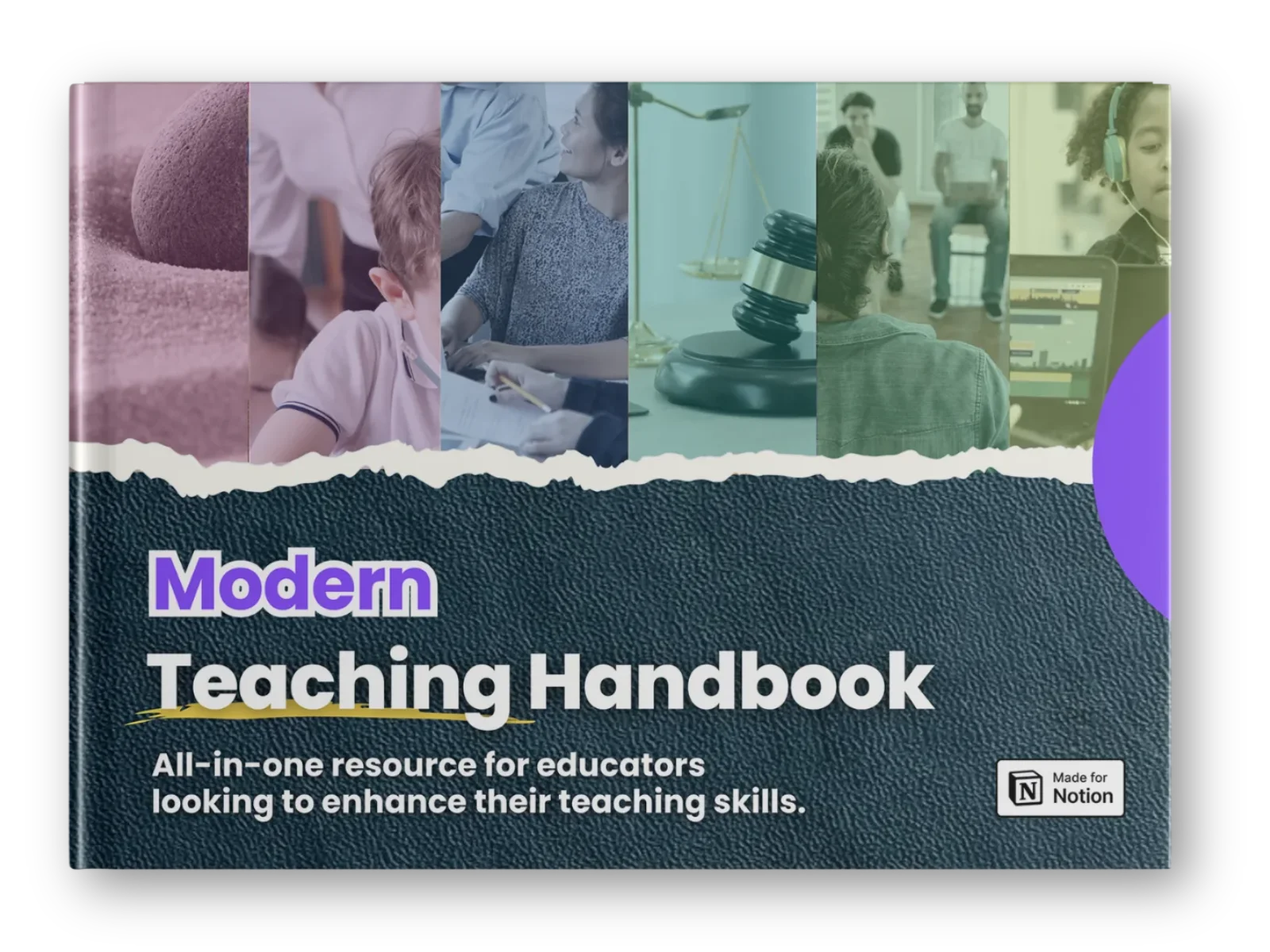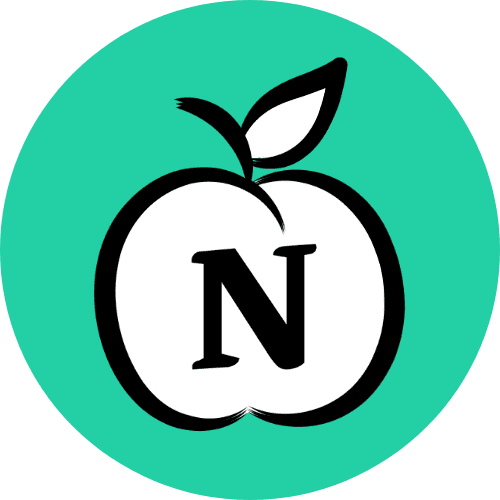Modern Teaching Handbook
Master modern education with the all-in-one resource for educators. Get your free copy now!



Inquiry-Based Learning: Complete Teacher's Guide
Inquiry-Based Learning: Complete Teacher's Guide
Inquiry-Based Learning: Complete Teacher's Guide

Article by
Milo
ESL Content Coordinator & Educator
ESL Content Coordinator & Educator
All Posts
Imagine a classroom buzzing with excitement—not because the teacher is lecturing from the front, but because students are actively solving puzzles, asking questions, and conducting experiments. This isn't your typical "sit quietly and take notes" scene. Instead, it's Inquiry-Based Learning (IBL) in action, a teaching approach where curiosity takes center stage. So, what’s the deal with IBL, and why is everyone talking about it? Let’s dive in.
Imagine a classroom buzzing with excitement—not because the teacher is lecturing from the front, but because students are actively solving puzzles, asking questions, and conducting experiments. This isn't your typical "sit quietly and take notes" scene. Instead, it's Inquiry-Based Learning (IBL) in action, a teaching approach where curiosity takes center stage. So, what’s the deal with IBL, and why is everyone talking about it? Let’s dive in.
Modern Teaching Handbook
Master modern education with the all-in-one resource for educators. Get your free copy now!

Modern Teaching Handbook
Master modern education with the all-in-one resource for educators. Get your free copy now!

Modern Teaching Handbook
Master modern education with the all-in-one resource for educators. Get your free copy now!

Introduction to Inquiry-Based Learning
What is Inquiry-Based Learning?
In a nutshell, Inquiry-Based Learning flips the traditional education model on its head. Instead of giving students all the answers first, it encourages them to start with questions and figure things out through exploration.
Picture this: Instead of telling students the water cycle involves evaporation, condensation, and precipitation, a teacher might kick things off by asking, "Why do we see puddles disappear after it rains?" From there, students might make predictions, conduct experiments, and come up with their own explanations. The teacher acts as a guide, steering their learning journey without spoon-feeding the answers.
Think of IBL as a treasure hunt, where the "treasure" is understanding, and the map is curiosity itself.
Different Levels of Inquiry
Here’s the fun part: Inquiry-Based Learning isn’t one-size-fits-all. There are varying levels of student involvement, ranging from guided to fully open-ended.
Structured Inquiry: Here, teachers provide the question and perhaps even some of the tools students will need. For example, "What conditions cause seeds to grow best?"
Guided Inquiry: Students take more control by designing their methods of investigation, although the teacher still sets the focus. An example might be, "What factors affect plant growth?"
Open Inquiry: This is the holy grail of student autonomy. They come up with their own questions, conduct investigations, and decide how to present their findings.
Each level helps transition students from dependent learners to independent thinkers. It’s not about throwing kids into the deep end without a life jacket—it’s about building their confidence and skills step by step.
Why Does Inquiry Matter?
At its core, IBL mirrors how humans naturally learn. Think about toddlers. They're constantly exploring—touching, feeling, asking "why" a hundred times a day. That innate curiosity doesn’t fade as they grow older; often, it just gets stifled by rigid school systems.
Inquiry-Based Learning taps back into this innate curiosity by:
Encouraging critical thinking.
Promoting problem-solving skills.
Making learning feel more relevant to real life. (After all, adults rarely solve problems by memorizing; we research, experiment, and adapt.)
For example, rather than memorizing a timeline of historical events, students might investigate, "What can we learn from revolutions throughout history?" This type of learning not only deepens understanding but also makes it far more engaging.
The Big Shift: From Teacher-Centered to Student-Centered
Traditional classrooms often revolve around the teacher. They lecture, students listen, and tests measure how well they memorized the material. Inquiry-Based Learning wipes that slate clean. It’s all about putting students in the driver’s seat. Teachers become facilitators and collaborators, working alongside students as they “dig in” and discover knowledge for themselves.
This shift can feel strange at first (for both teachers and students), but it’s rewarding. Imagine the pride a student feels after solving a problem they weren’t handed the answer to. It's that "aha!" moment that sticks.
In summary, Inquiry-Based Learning is all about fostering curiosity and investigation. It empowers students to ask their own questions, take charge of their learning, and truly engage with the material. Ready to learn how this approach works in action? Keep reading!

Core Principles of Inquiry-Based Learning
Imagine walking into a classroom where students aren’t just passively listening to a lecture but are instead asking questions, investigating, and seeking their own answers. That’s the essence of inquiry-based learning! But how does it all work? At the heart of this approach are a few guiding principles that make the magic happen.
1. Curiosity Drives Learning
At its core, inquiry-based learning thrives on curiosity. Instead of starting with a rigid syllabus or teacher-led lecture, this approach centers on a simple but powerful idea: let the students' natural questions lead the way.
Why it matters: When students are genuinely curious, they engage more deeply in the learning process. They’re not just memorizing; they’re exploring.
Example: A science teacher might begin a lesson by asking, “Why do some objects float and others sink?” This sparks a sense of wonder, prompting students to investigate buoyancy through experiments, rather than jumping straight to formulas.
2. Questioning is Central
In inquiry-based learning, asking questions isn’t just encouraged—it's the lifeblood of the process. Students learn to craft thoughtful, open-ended questions that guide their exploration.
Open-ended vs. closed-ended: Instead of "What are the parts of a flower?" (closed-ended), students might ask, "Why do certain flowers thrive in specific environments?" (open-ended).
Teacher’s role: Teachers often model questioning by thinking aloud or challenging students' initial ideas with prompts like, “What evidence do you have to support that?”
3. Investigation Over Rote Learning
Gone are the days of memorizing facts and regurgitating them word-for-word. Inquiry-based learning emphasizes exploration and hands-on investigation.
Process-oriented learning: Students collect data, conduct experiments, or analyze sources, all while sharpening their critical thinking skills.
Example: In history, instead of memorizing dates, students might research primary sources and debate the causes of a key event, piecing the story together like detectives.
4. Collaboration is Key
Inquiry isn’t a solo mission. It thrives on teamwork. Whether students work in small groups or as part of a whole-class discussion, collaboration enhances learning by introducing diverse perspectives.
Benefits: Sharing ideas forces students to articulate their thinking and challenges them to consider other viewpoints.
Scenario: During a group math problem, one student might suggest a formula, while another questions whether it's the most efficient method. Together, they refine their solution.
5. Learning is Iterative
Inquiry-based learning embraces mistakes. In fact, it celebrates them! This principle recognizes that learning is rarely a straight path.
Trial and error: Students test a hypothesis, encounter roadblocks, and refine their approach. This iterative cycle mimics how real-world scientists, writers, and innovators work.
Example: In an art class, a student might try sculpting with clay and find it collapses. Instead of stopping, they rework the structure based on what they’ve learned.
6. Reflection Deepens Understanding
Once the questions have been explored and discoveries made, reflection plays a crucial role. Students step back to evaluate what they’ve learned and how they got there.
Metacognition matters: Reflecting on the process helps learners understand not just what they know, but how they came to know it.
Practical example: After a geography project mapping rainfall patterns, students might discuss, “What surprised us?” or “How could we improve our methods next time?”
Understanding these core principles of inquiry-based learning lays the foundation for making your classroom a hub of exploration and creativity. It's all about flipping the script—letting students take the driver’s seat while you guide them on their exciting journey of discovery. Ready to dive deeper? Keep reading to learn how to actually implement this approach!

Benefits of Inquiry-Based Learning in the Classroom
Imagine this: A classroom buzzing with energy, students leaning into discussions, eyes lighting up as they connect ideas. That's the magic of inquiry-based learning (IBL). But what exactly makes this approach so effective? Let’s dive into the benefits and see why it’s such a game-changer for modern education.
Encourages Deep Engagement
Inquiry-based learning naturally gives students ownership of their learning. Instead of passively absorbing facts, they become active participants, asking questions, digging for answers, and constructing their own understanding.
Critical Thinking: When students are encouraged to ask “why” and “how,” their critical thinking muscles get a solid workout.
Curiosity-Fueled Exploration: Driven by their own questions, learners dive into topics with genuine curiosity. This creates a personal connection to the material that can’t be replicated through lectures or rote memorization.
Lasting Retention: You’re more likely to remember something you discovered on your own, right? That’s a key feature of IBL—it goes beyond surface-level learning.
Take, for instance, a middle school science class. Instead of being handed information about ecosystems, the teacher might challenge students to investigate, “Why are pollinators vital to our food system?” By exploring this question, students actively research the role of bees, butterflies, and other pollinators, creating a deeper understanding they’ll carry with them.
Builds Essential Life Skills
Let’s face it—kids won’t always have a teacher guiding them through life’s questions. Inquiry-based learning equips them with the tools they’ll need to navigate future challenges, both big and small.
Problem-Solving: Through IBL, students learn how to approach challenges methodically. They practice breaking down complex questions into manageable steps.
Collaboration: Often, inquiry takes place in groups, emphasizing teamwork and shared ideas. Picture students brainstorming solutions to global issues like plastic pollution—it’s powerful stuff.
Adaptability: As students investigate, they face dead-ends and surprises. Figuring out how to pivot and adapt? That’s a life skill for the ages.
Sparks Confidence and Independence
There’s something deeply empowering about uncovering answers yourself. Inquiry-based learning fosters confidence by showing students they’re capable of tackling tough questions.
Ownership Over Success: Completing a goal they set out to achieve brings a huge sense of pride.
Resilience in Failure: Every wrong step becomes a learning experience, reinforcing the idea that mistakes are just stepping stones to improvement.
Think of a high school history project where students independently research the causes of a social movement like Civil Rights. By crafting their own narrative and unearthing primary sources, they gain the confidence to take on even more meaningful challenges in the future.
Makes Learning Exciting and Relevant
Let’s be real—when was the last time you got excited about textbook chapters and prewritten worksheets? Inquiry-based learning brings curiosity and excitement back into the classroom.
Real-World Connections: Learning doesn’t feel abstract when it tackles real-world issues. Whether investigating renewable energy or local water quality, students see the relevance of their work.
Engaging Activities: It’s hands-on and dynamic. Students might build prototypes, conduct experiments, or even interview community members.
This approach feeds their imagination while anchoring lessons in real-life applications, making school feel less like a chore and more like an adventure.
So, what’s the takeaway here? Inquiry-based learning doesn’t just teach facts—it teaches how to think, question, and grow. From critical thinking to confidence-building, the benefits ripple far beyond the classroom walls. Ready to explore how teachers can bring this magic into their classrooms? Stay tuned!

Key Strategies for Implementing Inquiry-Based Learning
Ever notice how kids seem to ask a million questions? “Why is the sky blue? How do birds fly? Can I touch the sun?” It’s like their curiosity has no off switch! Inquiry-based learning taps into this natural drive to explore, making it a perfect approach for the classroom. But how do you turn those “why” questions into meaningful learning experiences? Let’s dive into some key strategies to bring this method to life.
Start with Powerful Questions
At the heart of inquiry-based learning is a good question—one that sparks curiosity, challenges assumptions, and opens the door to discovery. Your role as a teacher is to plant the seed with thought-provoking queries.
Open-Ended Questions: Focus on questions that don’t have a single correct answer. For example, instead of asking, “What is the water cycle?” try asking, “Why do you think some areas of the world are drier than others?”
Student-Driven: Encourage students to come up with their own questions. For instance, you could prompt with, “What’s something you’ve always wondered about the stars?”
Relatable Topics: Frame questions around real-world problems or students’ interests. A question like, “How can we reduce food waste in our cafeteria?” not only grabs attention but also builds practical skills.
Build a Culture of Curiosity
Curiosity is contagious! Create an environment where students feel safe to explore, make mistakes, and ask “what if.” A welcoming atmosphere fosters deep thinking and engagement.
Celebrate Questions, Not Just Answers: Reward students for asking insightful questions—even if they don’t find the “correct” answers.
Encourage Exploration: Give students time to investigate at their own pace. For example, during a lesson on ecosystems, let them choose and research an animal they’re curious about.
Model Curiosity: Show students that you're a lifelong learner, too! Say things like, “That’s such a great question—I wonder about that too. Let’s figure it out together.”
Design Hands-On Learning Experiences
If you want students to really engage, get them actively involved. Inquiry often thrives when students can experiment, research, or create.
Experiments: Have students form hypotheses and test them. For example, let them explore, “What conditions make plants grow the fastest?”
Fieldwork: Take questions outside the classroom. Could they investigate erosion near your school? Or poll classmates to gather data for a question like, “What breakfast gives the most energy during the day?”
Projects: Use project-based learning to tackle big questions. A group studying renewable energy could create miniature solar panels and test their efficiency.
Scaffold the Process
Inquiry-based learning isn’t about dropping students in the deep end and hoping they swim. They need guidance to develop inquiry skills.
Set Clear Goals: Begin with a clear objective. For example, in a lesson on ancient civilizations, the goal might be to learn how geography influenced cultural development.
Break It Down: Help students structure their research into manageable steps—formulating questions, gathering evidence, analyzing information, and drawing conclusions.
Use Graphic Organizers: Provide tools like question webs or “KWL” charts (What I Know, Want to Know, and Learned) to help students track their progress.
Encourage Collaboration
Inquiry often works best when students team up. Group brainstorming, debates, or joint projects can enrich the learning process.
Think-Pair-Share: Have students pair up and discuss their ideas before opening the floor to the class.
Group Roles: Assign roles like researcher, recorder, or presenter to ensure everyone contributes.
Peer Feedback: Encourage students to review each other’s work, asking questions and offering ideas for improvement.
Embrace Reflection
The inquiry process isn’t complete without a moment to pause and think about what’s been learned and how it was discovered.
Reflective Journals: Ask students to write about what surprised them or what they still wonder.
Group Discussions: Hold a class debrief. “What was challenging about this project? How did you overcome it?”
Next Steps: Use their reflections as a springboard for further inquiry. “Now that we’ve explored renewable energy, what other environmental problems could we investigate?”
By focusing on these strategies, you can transform your classroom into a hub of discovery and excitement. Ready to unleash your students’ inner explorers? Inquiry-based learning is a journey, not a one-time activity, but with these tools in hand, you’re well on your way to fostering a love of lifelong learning.

Role of the Teacher in Inquiry-Based Learning
Imagine stepping into a classroom where students aren’t just passively soaking in information but instead actively questioning, exploring, and discovering. It sounds exciting, right? But here’s the twist—it all hinges on the teacher. In an inquiry-based learning (IBL) environment, the role of the teacher is less about giving answers and more about guiding the journey. Let’s break down what it looks like to be an effective facilitator in this student-centered approach to learning.
Shifting from "Sage on the Stage" to "Guide on the Side"
Traditionally, teachers are seen as the ultimate source of knowledge—the "sage on the stage." But in inquiry-based learning, the teacher takes on the role of a coach or mentor. Instead of providing information, they spark curiosity and empower students to find answers on their own. Think of it like being the director of a play: you’re behind the scenes, supporting the actors (students) as they take center stage.
Here’s what this shift looks like in practice:
Encouraging Questions: Teachers create a safe, open environment where students feel comfortable asking questions—no matter how basic or complex.
Providing Scaffolding: Teachers offer just enough support to keep students from feeling lost but still challenge them to move forward independently.
Facilitating Discussion: Instead of telling students what’s right or wrong, teachers prompt thoughtful conversations that allow multiple perspectives to emerge.
Being a Curiosity Catalyst
A great inquiry-based teacher doesn’t just answer questions—they inspire them. Engaging teachers pique students’ curiosity by introducing intriguing scenarios, thought-provoking problems, or real-world dilemmas students want to solve.
For example, a science teacher might start a lesson by asking, “Why do certain plants grow better in the shade?” Instead of diving into photosynthesis right away, they encourage students to brainstorm possible explanations and design small experiments. It’s all about encouraging students to be detectives of their own learning.
Some ways to spark curiosity include:
Using Open-Ended Prompts: Phrases like “What do you notice? What do you wonder?” can ignite deeper thinking.
Providing Tangible Exploration Opportunities: Physical objects, photos, or videos often trigger natural wonder.
Connecting to Real-World Problems: If students see value in what they’re investigating, they’ll stay engaged longer.
Balancing Freedom and Structure
One challenge teachers face is finding the right balance between giving students freedom and keeping the learning process on track. IBL isn’t about letting students roam aimlessly—it’s about giving them a structured path to explore independently. Imagine a winding hiking trail: students can pick their pace and notice different landmarks, but the teacher is the guide making sure no one gets lost.
Strategies for this balance include:
Setting Clear Goals: Teachers outline learning objectives upfront, so students know their end destination.
Monitoring Progress: Regular check-ins, like reflective group discussions or one-on-one conferences, help teachers gauge where students are and offer timely guidance if they veer off-track.
Modeling Inquiry Skills: Demonstrating how to ask good questions, gather evidence, and analyze data provides students with a mental map to follow.
Assessing and Adapting to Student Needs
Every student learns differently—and in an inquiry classroom, their differences really shine. A teacher in this role must wear multiple hats: observer, problem-solver, and motivator all rolled into one.
Teachers can assess and support student progress by:
Formative Assessment: Frequent, informal tools like journal entries, brainstorming sessions, or peer feedback allow teachers to track understanding without a final exam.
Individualized Support: Some students might thrive independently, while others may need extra guidance. Teachers adapt their role accordingly.
Celebrating Success: Recognizing both small wins (like asking a particularly insightful question) and big milestones keeps students motivated.
In an inquiry-based classroom, the teacher isn’t the star, but they’re undoubtedly the hero behind the scenes. They create an environment where curiosity thrives, provide tools to tackle tough questions, and walk alongside students as they embark on self-driven journeys of discovery. And while the role may be challenging, the payoff—watching students grow into confident, critical thinkers—is absolutely worth it.

Examples of Inquiry-Based Learning Activities
Imagine walking into a classroom buzzing with excitement. Instead of desks in neat rows, students huddle together in groups, debating, experimenting, and sketching ideas on whiteboards. They're learning—but not because someone just lectured them. They're discovering for themselves. This is what inquiry-based learning looks like in action! Below are some practical examples to inspire these moments of curious exploration in any classroom.
1. Science Investigation: Solving Real-World Problems
Science is naturally suited for inquiry-based learning. Instead of starting with a lecture about photosynthesis or electricity, why not kick things off with an open-ended question?
Example: "How can we create a better way to power our school using renewable energy?"
Students could research different sources of renewable energy: solar panels, wind turbines, or even something more experimental like algae biofuel.
Groups might conduct experiments, such as testing solar panel efficiency by adjusting light angles or measuring wind power with small turbines.
At the end, they present their solutions to a "School Board" panel (real or imaginary).
Outcome: Not only do students learn science concepts, but they also see how knowledge applies in the real world.
2. History Mystery: Becoming a Detective
Who doesn’t love a good mystery? Inquiry-based learning can transform your history lessons into a thrilling detective story.
Example: "Was Napoleon a hero or a tyrant?"
Give students a mix of primary sources: letters, battle reports, political cartoons. Some may glorify Napoleon; others may criticize him.
Students analyze the evidence, piece together their interpretations, and ultimately "take a side."
To make it more interactive, stage a mock trial with Napoleon as the defendant, where students argue their sides with their findings.
Outcome: Students develop critical thinking, research skills, and discover how perspectives shape history.
3. STEM Challenge: Build, Break, and Try Again
Engineering challenges are a gold mine for hands-on inquiry. They allow students to fail forward and refine their ideas.
Example: "Design a bridge that can hold the weight of 100 pennies using only paper, tape, and straws."
Students brainstorm possible designs and test them. (Spoiler alert: a lot of bridges are going to collapse!)
After experimenting and learning from failed attempts, they collaborate to strengthen their designs.
Finally, a friendly "strength test" competition reveals the winners.
Outcome: The process itself—trial and error, testing hypotheses, and debating ideas—teaches persistence and teamwork.
4. Language Arts Debate: What’s the Author Really Saying?
Even reading and writing can spark inquiry! Instead of spoon-feeding meaning, let students dig for answers themselves.
Example: "What does the monster in Frankenstein really represent?"
Divide students into groups to explore different interpretations: Is the monster a symbol of rejection, scientific hubris, or something else entirely?
After researching textual evidence, they debate their findings or co-write a persuasive essay defending their argument.
Outcome: This activity deepens comprehension while sharpening argumentative skills.
5. Community Problem Solving: Local Projects with Impact
Inquiry doesn’t have to stay in the classroom. Take it into your community for projects that resonate with students’ lives.
Example: "How can we reduce waste in our school cafeteria?"
Students could interview cafeteria staff, survey their peers, or research sustainable practices at other schools.
Based on findings, they might propose recycling programs, compost bins, or a no-waste lunch initiative.
Bonus: Turn their proposal into an actual project and watch the impact unfold!
Outcome: Beyond academic skills, students gain the satisfaction of making a difference.
Final Thought: Start Small
If you’re new to inquiry-based activities, don’t feel pressured to reinvent the wheel. A simple question like, "What materials make the best airplane?" for a paper plane competition can ignite that spark. The key is to give students the freedom to explore, test, and create for themselves while offering just enough structure to guide them.
What's stopping you? Time to let curiosity lead the way!

Overcoming Common Challenges in Inquiry-Based Learning
Inquiry-based learning is an exciting, student-centered approach that fosters curiosity and critical thinking. But let’s be real—it's not all smooth sailing. Implementing this method can come with its fair share of hurdles. The good news? Most challenges can be tackled with some creative thinking, patience, and preparation. Let’s explore common roadblocks and how to conquer them like a pro.
Challenge 1: Students Struggle with Open-Ended Questions
Imagine this: You pose a fascinating, open-ended question to your class, expecting them to dive into deep exploration. Instead, you’re met with blank stares and a deafening silence. Sound familiar? Many students are so accustomed to right-or-wrong answers that they feel overwhelmed by the freedom of inquiry.
How to Approach It:
Start small: Ease students into open-ended questioning. Begin with guided questions like, "What do you think will happen if...?" or "Why might this work differently in another situation?"
Model curiosity: Show students how to explore by thinking aloud. For example, say, "I wonder why the leaves on this plant are drooping. Could it be water? Light? Let's investigate!"
Celebrate attempts, not just answers: Let students know it’s okay to take a guess or make mistakes. Celebrate their willingness to try, even if their ideas aren’t fully developed.
Transition: With a little encouragement, students will grow more confident in asking "why" and "what if" questions.
Challenge 2: Time Management Woes
Inquiry-based learning doesn’t fit neatly into a 45-minute block. Investigations can stretch longer than anticipated, and it’s easy to lose track of time following unexpected yet intriguing paths.
How to Approach It:
Set clear milestones: Break larger inquiries into smaller chunks with deadlines. For example, allocate one day for brainstorming, another for research, and so on.
Embrace structure within exploration: While inquiry thrives on flexibility, a light framework can prevent chaos. Provide students with a timeline or checklist to help them stay on track.
Be okay with unfinished projects: Not every inquiry needs to wrap up completely. Sometimes, the process (and the questions raised) is more valuable than tidy conclusions.
Transition: Structuring time doesn’t stifle creativity—it ensures students can focus without feeling rushed.
Challenge 3: Teachers Feeling Like a "Guide on the Side"
Letting go of control can be uncomfortable. Teachers often struggle to adjust from being the “expert” to acting as a facilitator. When students lead the process, there’s always the fear that things might go sideways.
How to Approach It:
Prepare open-ended resources: Have a bank of resources prepared (articles, videos, websites) so you’re ready to steer students back on course if they get stuck.
Ask reflective guiding questions: If students wander off-topic, gently redirect them by asking, "How does this connect to our main question?"
Trust the process: It’s okay for inquiries to feel messy. Some of the best discoveries come from unexpected detours.
Transition: Remember, your students’ “aha!” moments often come from their own messy explorations, not your pre-planned script.
Challenge 4: Limited Resources or Support
Inquiry-based learning might demand materials, technology, or supportive environments that aren’t readily available. This can feel frustrating, especially if resources are tight.
How to Approach It:
Be resourceful with what you have: A magnifying glass and a notebook can turn into a science toolkit. Students can use their smartphones for research or interviews. Creativity is key!
Partner with the community: Reach out to local organizations, libraries, or professionals willing to share expertise or supplies. Field trips and guest speakers can also enrich the learning experience.
Leverage digital tools: Free platforms like Google Earth, Canva, or Padlet can serve as substitutes for expensive tools.
Transition: Sometimes, the challenge of limited resources can inspire even more creative inquiry solutions.

Final Thoughts
Inquiry-based learning may not always be easy, but it’s worth it. By addressing these challenges head-on, you can foster an environment where curiosity thrives and students become active participants in their own education. And remember—you don’t have to get it perfect every time. Each challenge is just another learning opportunity (for both you and your students). Now, go light that spark of curiosity!
Introduction to Inquiry-Based Learning
What is Inquiry-Based Learning?
In a nutshell, Inquiry-Based Learning flips the traditional education model on its head. Instead of giving students all the answers first, it encourages them to start with questions and figure things out through exploration.
Picture this: Instead of telling students the water cycle involves evaporation, condensation, and precipitation, a teacher might kick things off by asking, "Why do we see puddles disappear after it rains?" From there, students might make predictions, conduct experiments, and come up with their own explanations. The teacher acts as a guide, steering their learning journey without spoon-feeding the answers.
Think of IBL as a treasure hunt, where the "treasure" is understanding, and the map is curiosity itself.
Different Levels of Inquiry
Here’s the fun part: Inquiry-Based Learning isn’t one-size-fits-all. There are varying levels of student involvement, ranging from guided to fully open-ended.
Structured Inquiry: Here, teachers provide the question and perhaps even some of the tools students will need. For example, "What conditions cause seeds to grow best?"
Guided Inquiry: Students take more control by designing their methods of investigation, although the teacher still sets the focus. An example might be, "What factors affect plant growth?"
Open Inquiry: This is the holy grail of student autonomy. They come up with their own questions, conduct investigations, and decide how to present their findings.
Each level helps transition students from dependent learners to independent thinkers. It’s not about throwing kids into the deep end without a life jacket—it’s about building their confidence and skills step by step.
Why Does Inquiry Matter?
At its core, IBL mirrors how humans naturally learn. Think about toddlers. They're constantly exploring—touching, feeling, asking "why" a hundred times a day. That innate curiosity doesn’t fade as they grow older; often, it just gets stifled by rigid school systems.
Inquiry-Based Learning taps back into this innate curiosity by:
Encouraging critical thinking.
Promoting problem-solving skills.
Making learning feel more relevant to real life. (After all, adults rarely solve problems by memorizing; we research, experiment, and adapt.)
For example, rather than memorizing a timeline of historical events, students might investigate, "What can we learn from revolutions throughout history?" This type of learning not only deepens understanding but also makes it far more engaging.
The Big Shift: From Teacher-Centered to Student-Centered
Traditional classrooms often revolve around the teacher. They lecture, students listen, and tests measure how well they memorized the material. Inquiry-Based Learning wipes that slate clean. It’s all about putting students in the driver’s seat. Teachers become facilitators and collaborators, working alongside students as they “dig in” and discover knowledge for themselves.
This shift can feel strange at first (for both teachers and students), but it’s rewarding. Imagine the pride a student feels after solving a problem they weren’t handed the answer to. It's that "aha!" moment that sticks.
In summary, Inquiry-Based Learning is all about fostering curiosity and investigation. It empowers students to ask their own questions, take charge of their learning, and truly engage with the material. Ready to learn how this approach works in action? Keep reading!

Core Principles of Inquiry-Based Learning
Imagine walking into a classroom where students aren’t just passively listening to a lecture but are instead asking questions, investigating, and seeking their own answers. That’s the essence of inquiry-based learning! But how does it all work? At the heart of this approach are a few guiding principles that make the magic happen.
1. Curiosity Drives Learning
At its core, inquiry-based learning thrives on curiosity. Instead of starting with a rigid syllabus or teacher-led lecture, this approach centers on a simple but powerful idea: let the students' natural questions lead the way.
Why it matters: When students are genuinely curious, they engage more deeply in the learning process. They’re not just memorizing; they’re exploring.
Example: A science teacher might begin a lesson by asking, “Why do some objects float and others sink?” This sparks a sense of wonder, prompting students to investigate buoyancy through experiments, rather than jumping straight to formulas.
2. Questioning is Central
In inquiry-based learning, asking questions isn’t just encouraged—it's the lifeblood of the process. Students learn to craft thoughtful, open-ended questions that guide their exploration.
Open-ended vs. closed-ended: Instead of "What are the parts of a flower?" (closed-ended), students might ask, "Why do certain flowers thrive in specific environments?" (open-ended).
Teacher’s role: Teachers often model questioning by thinking aloud or challenging students' initial ideas with prompts like, “What evidence do you have to support that?”
3. Investigation Over Rote Learning
Gone are the days of memorizing facts and regurgitating them word-for-word. Inquiry-based learning emphasizes exploration and hands-on investigation.
Process-oriented learning: Students collect data, conduct experiments, or analyze sources, all while sharpening their critical thinking skills.
Example: In history, instead of memorizing dates, students might research primary sources and debate the causes of a key event, piecing the story together like detectives.
4. Collaboration is Key
Inquiry isn’t a solo mission. It thrives on teamwork. Whether students work in small groups or as part of a whole-class discussion, collaboration enhances learning by introducing diverse perspectives.
Benefits: Sharing ideas forces students to articulate their thinking and challenges them to consider other viewpoints.
Scenario: During a group math problem, one student might suggest a formula, while another questions whether it's the most efficient method. Together, they refine their solution.
5. Learning is Iterative
Inquiry-based learning embraces mistakes. In fact, it celebrates them! This principle recognizes that learning is rarely a straight path.
Trial and error: Students test a hypothesis, encounter roadblocks, and refine their approach. This iterative cycle mimics how real-world scientists, writers, and innovators work.
Example: In an art class, a student might try sculpting with clay and find it collapses. Instead of stopping, they rework the structure based on what they’ve learned.
6. Reflection Deepens Understanding
Once the questions have been explored and discoveries made, reflection plays a crucial role. Students step back to evaluate what they’ve learned and how they got there.
Metacognition matters: Reflecting on the process helps learners understand not just what they know, but how they came to know it.
Practical example: After a geography project mapping rainfall patterns, students might discuss, “What surprised us?” or “How could we improve our methods next time?”
Understanding these core principles of inquiry-based learning lays the foundation for making your classroom a hub of exploration and creativity. It's all about flipping the script—letting students take the driver’s seat while you guide them on their exciting journey of discovery. Ready to dive deeper? Keep reading to learn how to actually implement this approach!

Benefits of Inquiry-Based Learning in the Classroom
Imagine this: A classroom buzzing with energy, students leaning into discussions, eyes lighting up as they connect ideas. That's the magic of inquiry-based learning (IBL). But what exactly makes this approach so effective? Let’s dive into the benefits and see why it’s such a game-changer for modern education.
Encourages Deep Engagement
Inquiry-based learning naturally gives students ownership of their learning. Instead of passively absorbing facts, they become active participants, asking questions, digging for answers, and constructing their own understanding.
Critical Thinking: When students are encouraged to ask “why” and “how,” their critical thinking muscles get a solid workout.
Curiosity-Fueled Exploration: Driven by their own questions, learners dive into topics with genuine curiosity. This creates a personal connection to the material that can’t be replicated through lectures or rote memorization.
Lasting Retention: You’re more likely to remember something you discovered on your own, right? That’s a key feature of IBL—it goes beyond surface-level learning.
Take, for instance, a middle school science class. Instead of being handed information about ecosystems, the teacher might challenge students to investigate, “Why are pollinators vital to our food system?” By exploring this question, students actively research the role of bees, butterflies, and other pollinators, creating a deeper understanding they’ll carry with them.
Builds Essential Life Skills
Let’s face it—kids won’t always have a teacher guiding them through life’s questions. Inquiry-based learning equips them with the tools they’ll need to navigate future challenges, both big and small.
Problem-Solving: Through IBL, students learn how to approach challenges methodically. They practice breaking down complex questions into manageable steps.
Collaboration: Often, inquiry takes place in groups, emphasizing teamwork and shared ideas. Picture students brainstorming solutions to global issues like plastic pollution—it’s powerful stuff.
Adaptability: As students investigate, they face dead-ends and surprises. Figuring out how to pivot and adapt? That’s a life skill for the ages.
Sparks Confidence and Independence
There’s something deeply empowering about uncovering answers yourself. Inquiry-based learning fosters confidence by showing students they’re capable of tackling tough questions.
Ownership Over Success: Completing a goal they set out to achieve brings a huge sense of pride.
Resilience in Failure: Every wrong step becomes a learning experience, reinforcing the idea that mistakes are just stepping stones to improvement.
Think of a high school history project where students independently research the causes of a social movement like Civil Rights. By crafting their own narrative and unearthing primary sources, they gain the confidence to take on even more meaningful challenges in the future.
Makes Learning Exciting and Relevant
Let’s be real—when was the last time you got excited about textbook chapters and prewritten worksheets? Inquiry-based learning brings curiosity and excitement back into the classroom.
Real-World Connections: Learning doesn’t feel abstract when it tackles real-world issues. Whether investigating renewable energy or local water quality, students see the relevance of their work.
Engaging Activities: It’s hands-on and dynamic. Students might build prototypes, conduct experiments, or even interview community members.
This approach feeds their imagination while anchoring lessons in real-life applications, making school feel less like a chore and more like an adventure.
So, what’s the takeaway here? Inquiry-based learning doesn’t just teach facts—it teaches how to think, question, and grow. From critical thinking to confidence-building, the benefits ripple far beyond the classroom walls. Ready to explore how teachers can bring this magic into their classrooms? Stay tuned!

Key Strategies for Implementing Inquiry-Based Learning
Ever notice how kids seem to ask a million questions? “Why is the sky blue? How do birds fly? Can I touch the sun?” It’s like their curiosity has no off switch! Inquiry-based learning taps into this natural drive to explore, making it a perfect approach for the classroom. But how do you turn those “why” questions into meaningful learning experiences? Let’s dive into some key strategies to bring this method to life.
Start with Powerful Questions
At the heart of inquiry-based learning is a good question—one that sparks curiosity, challenges assumptions, and opens the door to discovery. Your role as a teacher is to plant the seed with thought-provoking queries.
Open-Ended Questions: Focus on questions that don’t have a single correct answer. For example, instead of asking, “What is the water cycle?” try asking, “Why do you think some areas of the world are drier than others?”
Student-Driven: Encourage students to come up with their own questions. For instance, you could prompt with, “What’s something you’ve always wondered about the stars?”
Relatable Topics: Frame questions around real-world problems or students’ interests. A question like, “How can we reduce food waste in our cafeteria?” not only grabs attention but also builds practical skills.
Build a Culture of Curiosity
Curiosity is contagious! Create an environment where students feel safe to explore, make mistakes, and ask “what if.” A welcoming atmosphere fosters deep thinking and engagement.
Celebrate Questions, Not Just Answers: Reward students for asking insightful questions—even if they don’t find the “correct” answers.
Encourage Exploration: Give students time to investigate at their own pace. For example, during a lesson on ecosystems, let them choose and research an animal they’re curious about.
Model Curiosity: Show students that you're a lifelong learner, too! Say things like, “That’s such a great question—I wonder about that too. Let’s figure it out together.”
Design Hands-On Learning Experiences
If you want students to really engage, get them actively involved. Inquiry often thrives when students can experiment, research, or create.
Experiments: Have students form hypotheses and test them. For example, let them explore, “What conditions make plants grow the fastest?”
Fieldwork: Take questions outside the classroom. Could they investigate erosion near your school? Or poll classmates to gather data for a question like, “What breakfast gives the most energy during the day?”
Projects: Use project-based learning to tackle big questions. A group studying renewable energy could create miniature solar panels and test their efficiency.
Scaffold the Process
Inquiry-based learning isn’t about dropping students in the deep end and hoping they swim. They need guidance to develop inquiry skills.
Set Clear Goals: Begin with a clear objective. For example, in a lesson on ancient civilizations, the goal might be to learn how geography influenced cultural development.
Break It Down: Help students structure their research into manageable steps—formulating questions, gathering evidence, analyzing information, and drawing conclusions.
Use Graphic Organizers: Provide tools like question webs or “KWL” charts (What I Know, Want to Know, and Learned) to help students track their progress.
Encourage Collaboration
Inquiry often works best when students team up. Group brainstorming, debates, or joint projects can enrich the learning process.
Think-Pair-Share: Have students pair up and discuss their ideas before opening the floor to the class.
Group Roles: Assign roles like researcher, recorder, or presenter to ensure everyone contributes.
Peer Feedback: Encourage students to review each other’s work, asking questions and offering ideas for improvement.
Embrace Reflection
The inquiry process isn’t complete without a moment to pause and think about what’s been learned and how it was discovered.
Reflective Journals: Ask students to write about what surprised them or what they still wonder.
Group Discussions: Hold a class debrief. “What was challenging about this project? How did you overcome it?”
Next Steps: Use their reflections as a springboard for further inquiry. “Now that we’ve explored renewable energy, what other environmental problems could we investigate?”
By focusing on these strategies, you can transform your classroom into a hub of discovery and excitement. Ready to unleash your students’ inner explorers? Inquiry-based learning is a journey, not a one-time activity, but with these tools in hand, you’re well on your way to fostering a love of lifelong learning.

Role of the Teacher in Inquiry-Based Learning
Imagine stepping into a classroom where students aren’t just passively soaking in information but instead actively questioning, exploring, and discovering. It sounds exciting, right? But here’s the twist—it all hinges on the teacher. In an inquiry-based learning (IBL) environment, the role of the teacher is less about giving answers and more about guiding the journey. Let’s break down what it looks like to be an effective facilitator in this student-centered approach to learning.
Shifting from "Sage on the Stage" to "Guide on the Side"
Traditionally, teachers are seen as the ultimate source of knowledge—the "sage on the stage." But in inquiry-based learning, the teacher takes on the role of a coach or mentor. Instead of providing information, they spark curiosity and empower students to find answers on their own. Think of it like being the director of a play: you’re behind the scenes, supporting the actors (students) as they take center stage.
Here’s what this shift looks like in practice:
Encouraging Questions: Teachers create a safe, open environment where students feel comfortable asking questions—no matter how basic or complex.
Providing Scaffolding: Teachers offer just enough support to keep students from feeling lost but still challenge them to move forward independently.
Facilitating Discussion: Instead of telling students what’s right or wrong, teachers prompt thoughtful conversations that allow multiple perspectives to emerge.
Being a Curiosity Catalyst
A great inquiry-based teacher doesn’t just answer questions—they inspire them. Engaging teachers pique students’ curiosity by introducing intriguing scenarios, thought-provoking problems, or real-world dilemmas students want to solve.
For example, a science teacher might start a lesson by asking, “Why do certain plants grow better in the shade?” Instead of diving into photosynthesis right away, they encourage students to brainstorm possible explanations and design small experiments. It’s all about encouraging students to be detectives of their own learning.
Some ways to spark curiosity include:
Using Open-Ended Prompts: Phrases like “What do you notice? What do you wonder?” can ignite deeper thinking.
Providing Tangible Exploration Opportunities: Physical objects, photos, or videos often trigger natural wonder.
Connecting to Real-World Problems: If students see value in what they’re investigating, they’ll stay engaged longer.
Balancing Freedom and Structure
One challenge teachers face is finding the right balance between giving students freedom and keeping the learning process on track. IBL isn’t about letting students roam aimlessly—it’s about giving them a structured path to explore independently. Imagine a winding hiking trail: students can pick their pace and notice different landmarks, but the teacher is the guide making sure no one gets lost.
Strategies for this balance include:
Setting Clear Goals: Teachers outline learning objectives upfront, so students know their end destination.
Monitoring Progress: Regular check-ins, like reflective group discussions or one-on-one conferences, help teachers gauge where students are and offer timely guidance if they veer off-track.
Modeling Inquiry Skills: Demonstrating how to ask good questions, gather evidence, and analyze data provides students with a mental map to follow.
Assessing and Adapting to Student Needs
Every student learns differently—and in an inquiry classroom, their differences really shine. A teacher in this role must wear multiple hats: observer, problem-solver, and motivator all rolled into one.
Teachers can assess and support student progress by:
Formative Assessment: Frequent, informal tools like journal entries, brainstorming sessions, or peer feedback allow teachers to track understanding without a final exam.
Individualized Support: Some students might thrive independently, while others may need extra guidance. Teachers adapt their role accordingly.
Celebrating Success: Recognizing both small wins (like asking a particularly insightful question) and big milestones keeps students motivated.
In an inquiry-based classroom, the teacher isn’t the star, but they’re undoubtedly the hero behind the scenes. They create an environment where curiosity thrives, provide tools to tackle tough questions, and walk alongside students as they embark on self-driven journeys of discovery. And while the role may be challenging, the payoff—watching students grow into confident, critical thinkers—is absolutely worth it.

Examples of Inquiry-Based Learning Activities
Imagine walking into a classroom buzzing with excitement. Instead of desks in neat rows, students huddle together in groups, debating, experimenting, and sketching ideas on whiteboards. They're learning—but not because someone just lectured them. They're discovering for themselves. This is what inquiry-based learning looks like in action! Below are some practical examples to inspire these moments of curious exploration in any classroom.
1. Science Investigation: Solving Real-World Problems
Science is naturally suited for inquiry-based learning. Instead of starting with a lecture about photosynthesis or electricity, why not kick things off with an open-ended question?
Example: "How can we create a better way to power our school using renewable energy?"
Students could research different sources of renewable energy: solar panels, wind turbines, or even something more experimental like algae biofuel.
Groups might conduct experiments, such as testing solar panel efficiency by adjusting light angles or measuring wind power with small turbines.
At the end, they present their solutions to a "School Board" panel (real or imaginary).
Outcome: Not only do students learn science concepts, but they also see how knowledge applies in the real world.
2. History Mystery: Becoming a Detective
Who doesn’t love a good mystery? Inquiry-based learning can transform your history lessons into a thrilling detective story.
Example: "Was Napoleon a hero or a tyrant?"
Give students a mix of primary sources: letters, battle reports, political cartoons. Some may glorify Napoleon; others may criticize him.
Students analyze the evidence, piece together their interpretations, and ultimately "take a side."
To make it more interactive, stage a mock trial with Napoleon as the defendant, where students argue their sides with their findings.
Outcome: Students develop critical thinking, research skills, and discover how perspectives shape history.
3. STEM Challenge: Build, Break, and Try Again
Engineering challenges are a gold mine for hands-on inquiry. They allow students to fail forward and refine their ideas.
Example: "Design a bridge that can hold the weight of 100 pennies using only paper, tape, and straws."
Students brainstorm possible designs and test them. (Spoiler alert: a lot of bridges are going to collapse!)
After experimenting and learning from failed attempts, they collaborate to strengthen their designs.
Finally, a friendly "strength test" competition reveals the winners.
Outcome: The process itself—trial and error, testing hypotheses, and debating ideas—teaches persistence and teamwork.
4. Language Arts Debate: What’s the Author Really Saying?
Even reading and writing can spark inquiry! Instead of spoon-feeding meaning, let students dig for answers themselves.
Example: "What does the monster in Frankenstein really represent?"
Divide students into groups to explore different interpretations: Is the monster a symbol of rejection, scientific hubris, or something else entirely?
After researching textual evidence, they debate their findings or co-write a persuasive essay defending their argument.
Outcome: This activity deepens comprehension while sharpening argumentative skills.
5. Community Problem Solving: Local Projects with Impact
Inquiry doesn’t have to stay in the classroom. Take it into your community for projects that resonate with students’ lives.
Example: "How can we reduce waste in our school cafeteria?"
Students could interview cafeteria staff, survey their peers, or research sustainable practices at other schools.
Based on findings, they might propose recycling programs, compost bins, or a no-waste lunch initiative.
Bonus: Turn their proposal into an actual project and watch the impact unfold!
Outcome: Beyond academic skills, students gain the satisfaction of making a difference.
Final Thought: Start Small
If you’re new to inquiry-based activities, don’t feel pressured to reinvent the wheel. A simple question like, "What materials make the best airplane?" for a paper plane competition can ignite that spark. The key is to give students the freedom to explore, test, and create for themselves while offering just enough structure to guide them.
What's stopping you? Time to let curiosity lead the way!

Overcoming Common Challenges in Inquiry-Based Learning
Inquiry-based learning is an exciting, student-centered approach that fosters curiosity and critical thinking. But let’s be real—it's not all smooth sailing. Implementing this method can come with its fair share of hurdles. The good news? Most challenges can be tackled with some creative thinking, patience, and preparation. Let’s explore common roadblocks and how to conquer them like a pro.
Challenge 1: Students Struggle with Open-Ended Questions
Imagine this: You pose a fascinating, open-ended question to your class, expecting them to dive into deep exploration. Instead, you’re met with blank stares and a deafening silence. Sound familiar? Many students are so accustomed to right-or-wrong answers that they feel overwhelmed by the freedom of inquiry.
How to Approach It:
Start small: Ease students into open-ended questioning. Begin with guided questions like, "What do you think will happen if...?" or "Why might this work differently in another situation?"
Model curiosity: Show students how to explore by thinking aloud. For example, say, "I wonder why the leaves on this plant are drooping. Could it be water? Light? Let's investigate!"
Celebrate attempts, not just answers: Let students know it’s okay to take a guess or make mistakes. Celebrate their willingness to try, even if their ideas aren’t fully developed.
Transition: With a little encouragement, students will grow more confident in asking "why" and "what if" questions.
Challenge 2: Time Management Woes
Inquiry-based learning doesn’t fit neatly into a 45-minute block. Investigations can stretch longer than anticipated, and it’s easy to lose track of time following unexpected yet intriguing paths.
How to Approach It:
Set clear milestones: Break larger inquiries into smaller chunks with deadlines. For example, allocate one day for brainstorming, another for research, and so on.
Embrace structure within exploration: While inquiry thrives on flexibility, a light framework can prevent chaos. Provide students with a timeline or checklist to help them stay on track.
Be okay with unfinished projects: Not every inquiry needs to wrap up completely. Sometimes, the process (and the questions raised) is more valuable than tidy conclusions.
Transition: Structuring time doesn’t stifle creativity—it ensures students can focus without feeling rushed.
Challenge 3: Teachers Feeling Like a "Guide on the Side"
Letting go of control can be uncomfortable. Teachers often struggle to adjust from being the “expert” to acting as a facilitator. When students lead the process, there’s always the fear that things might go sideways.
How to Approach It:
Prepare open-ended resources: Have a bank of resources prepared (articles, videos, websites) so you’re ready to steer students back on course if they get stuck.
Ask reflective guiding questions: If students wander off-topic, gently redirect them by asking, "How does this connect to our main question?"
Trust the process: It’s okay for inquiries to feel messy. Some of the best discoveries come from unexpected detours.
Transition: Remember, your students’ “aha!” moments often come from their own messy explorations, not your pre-planned script.
Challenge 4: Limited Resources or Support
Inquiry-based learning might demand materials, technology, or supportive environments that aren’t readily available. This can feel frustrating, especially if resources are tight.
How to Approach It:
Be resourceful with what you have: A magnifying glass and a notebook can turn into a science toolkit. Students can use their smartphones for research or interviews. Creativity is key!
Partner with the community: Reach out to local organizations, libraries, or professionals willing to share expertise or supplies. Field trips and guest speakers can also enrich the learning experience.
Leverage digital tools: Free platforms like Google Earth, Canva, or Padlet can serve as substitutes for expensive tools.
Transition: Sometimes, the challenge of limited resources can inspire even more creative inquiry solutions.

Final Thoughts
Inquiry-based learning may not always be easy, but it’s worth it. By addressing these challenges head-on, you can foster an environment where curiosity thrives and students become active participants in their own education. And remember—you don’t have to get it perfect every time. Each challenge is just another learning opportunity (for both you and your students). Now, go light that spark of curiosity!
Modern Teaching Handbook
Master modern education with the all-in-one resource for educators. Get your free copy now!

Modern Teaching Handbook
Master modern education with the all-in-one resource for educators. Get your free copy now!

Modern Teaching Handbook
Master modern education with the all-in-one resource for educators. Get your free copy now!

Table of Contents
Modern Teaching Handbook
Master modern education with the all-in-one resource for educators. Get your free copy now!
2024 Notion4Teachers. All Rights Reserved.
2024 Notion4Teachers. All Rights Reserved.
2024 Notion4Teachers. All Rights Reserved.
2024 Notion4Teachers. All Rights Reserved.







